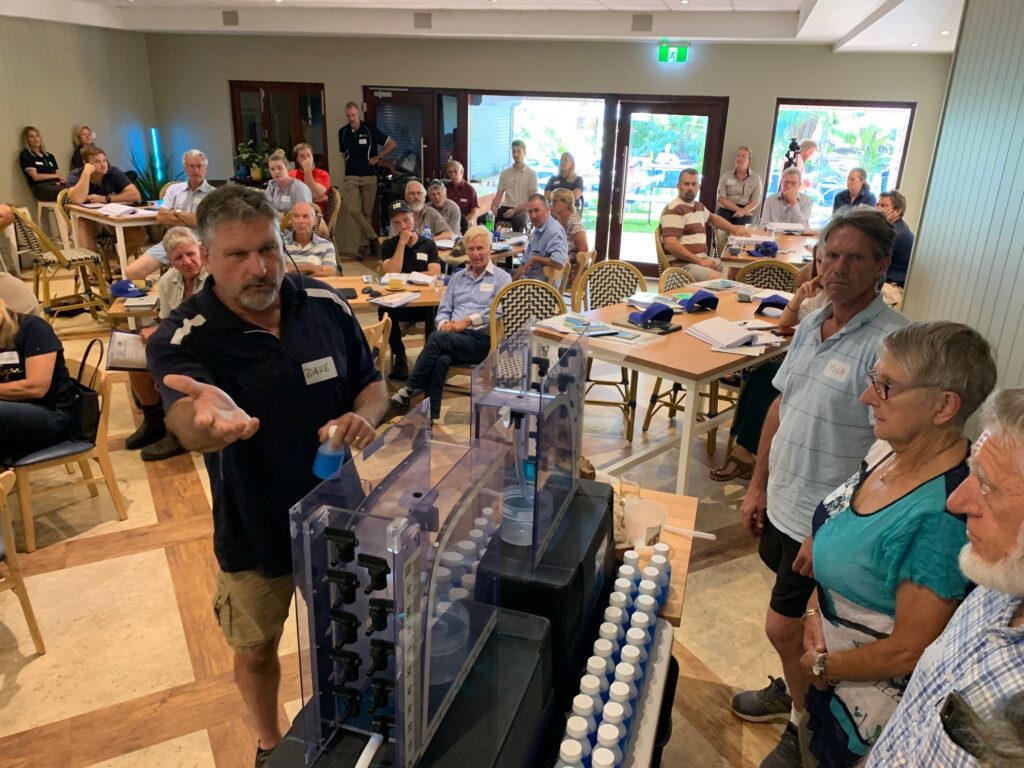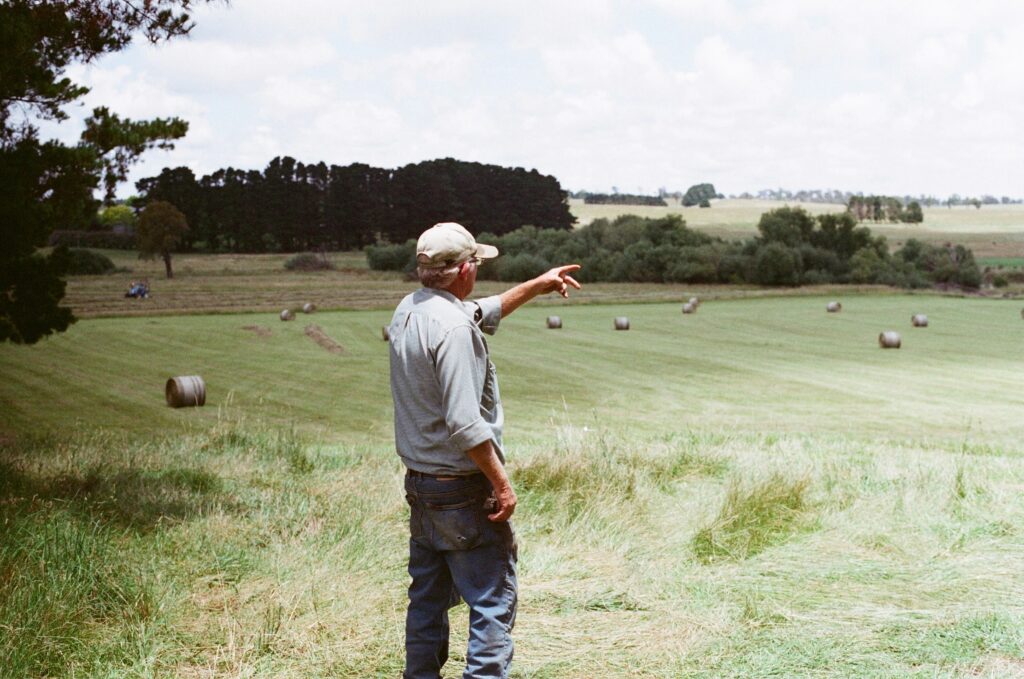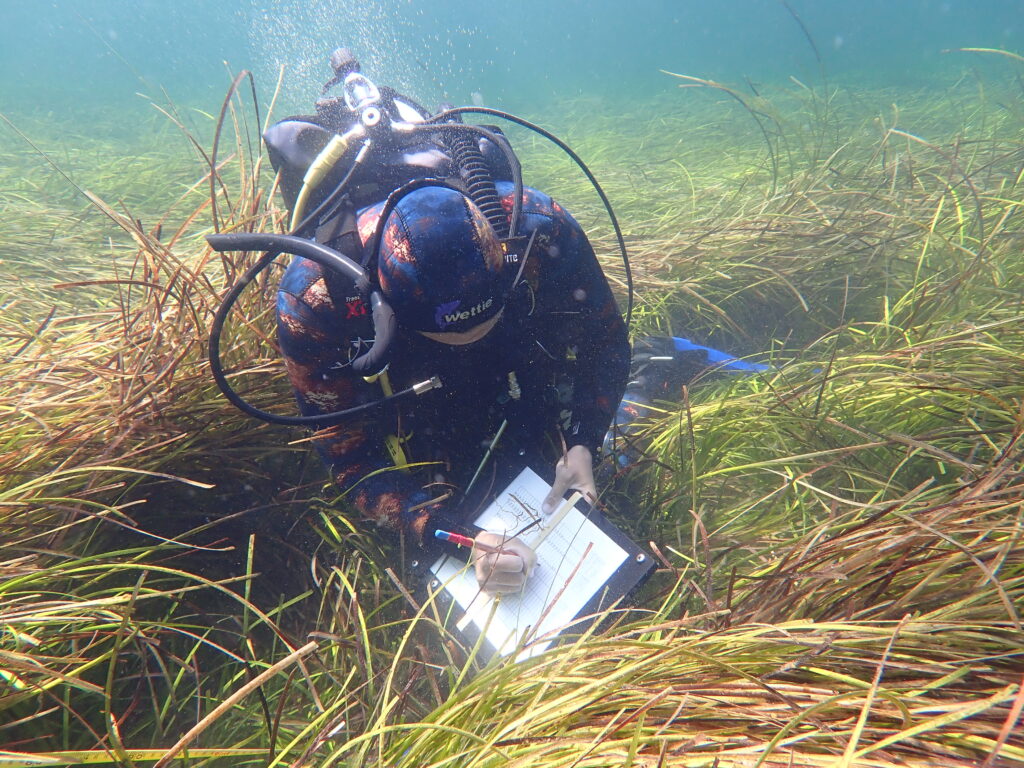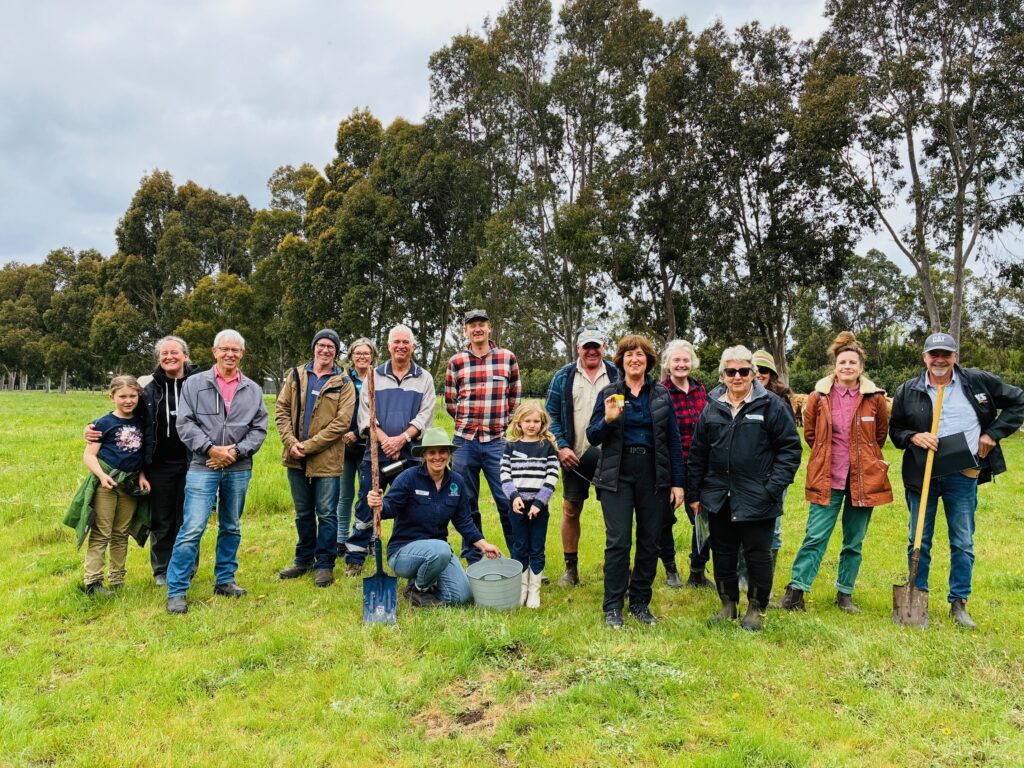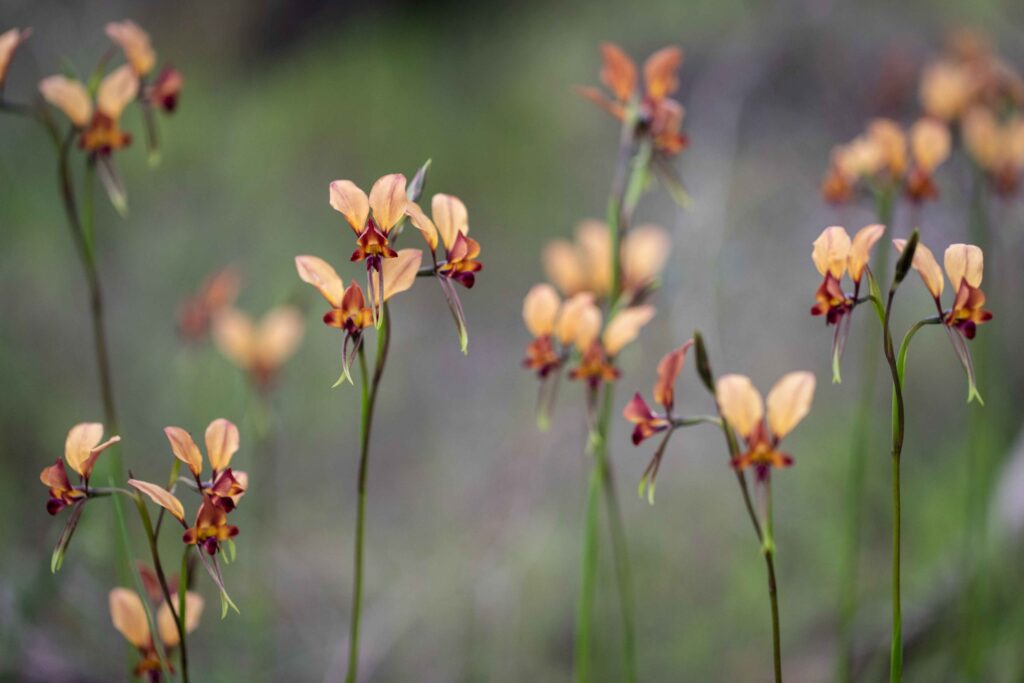Create a home for an endangered species
Building a Possum Box
Important refuges
Why build a possum box?
Possum boxes provide important refuges for Western Ringtail Possums, as mature trees decline in urban areas.
These artificial nests can be used as an alternative to a typical possum ‘drey’, providing a safe and warm place for possums to sleep during the day or raise their young. In the natural environment, possums would usually build their dreys (homes) using sticks, twigs, leafy branches, or in hollowed-out sections of old trees.
Building a possum box can be a very simple task that your whole family can do, or it can be more complex depending on your skill set. The simplest way to make a possum drey is with two hanging planter pots. A more complex design involves making a box with plywood or recycled pine pallet wood.
“A great diversity of Australian wildlife relies on hollow cavities in native trees (known as tree-hollows) to meet their nesting or roosting requirements. Such hollows take hundreds of years to form naturally, but sadly, due to massive land clearing since European settlement in Australia, countless numbers have been lost. This plight has severely impacted native wildlife.”
Environmental scientist, writer, educator, and wildlife filmmaker, Simon Cherriman, on the role that hollowed-out trees play in housing animals.
Hanging Planter Pot Possum Dreys
Follow these five steps to make a new home for possums in your backyard.
Step 1: You will need two hanging planter baskets, which can be purchased from your local nursery or hardware store.
Step 2: Attach the two hanging baskets together so that they make a hollow ball. Affix them with cable ties or wire.
Step 3: Cut a hole in the upper planter box, near the wire where they join together. It needs to be big enough to allow possums in and out.
Step 4: Finish your possum drey with some fresh peppermint leaves on the outside for camouflage and protection, and make a cosy drey with leaves on the inside.
Step 5: Find a suitable site to hang your possum drey. Using the hanging chain and other rope or wire, secure your possum drey in a sheltered tree. Choose somewhere out of reach of predators and sheltered from the wind and rain as much as possible.
Timber Possum Boxes
A longer-lasting possum box can be constructed from timber. These can be purchased from Busselton Men’s Shed, Dunsborough Men’s Shed, or you can make your own.
Tips on making a possum box:
- Any timber can be used to construct the box, as long as it is weather resistant.
- To stop rain from getting in the top of the box, ensure there is an overhang on all sides and the front.
- The wood does not have to be smooth. Having some texture or extra grip on the front is recommended to allow the possums to climb into the box.
- The possum box should be installed far enough off the ground to ensure it is safe from predators. Ideally, it should be 4m off the ground or higher.
Installing a Possum Box
Possum boxes can be installed yourself or by a professional arborist in backyards where cats and dogs are contained at night.
When installing a Possum Box:
- Choose a suitable tree greater than 10 years old preferably without hollows or dreys. The tree must be alive – no dead trunks. Ideally choose its known food source i.e Peppermint Trees- Agonis flexuosa. In the absence of a suitable Peppermint Tree, Marri, Jarrah, Tuart or a known habitat tree can be used.
- Place the box 4m or higher above ground amongst the branches and leaves to provide protection when the possum emerges from predators such as owls.
- Do not place the box on the main trunk, as this can be climbed by goannas/cats etc. Rather, place the box out in the branches of the tree.
- Ensure your pets (dogs and cats) are kept inside at night.
- Place boxes near food source (Peppermint Trees- Agonis flexuosa).
- Attach box to tree using wire inserted through old hose (to protect tree) or plastic coated clothesline (available from hardware stores). Black, stretchy tree tie (from revegetation suppliers) or old rope could also be used.
- Face the nest box away from the prevailing weather – south-east is suggested, if possible. Stormy weather comes mostly from the south/south west. West-facing boxes are too hot, and the low beams of the sun on dusk may impair the vision of the possum when it emerges in the evening.
- Face the door close to the trunk of the tree to reduce the time that the animal is exposed leaving the box. Small branches in front of the box will impede the entrance or flight of possible predators.
- If painting the possum box, use an outdoor, weather-proof paint in a camouflaged colour. This will also help prolong the life of the box.
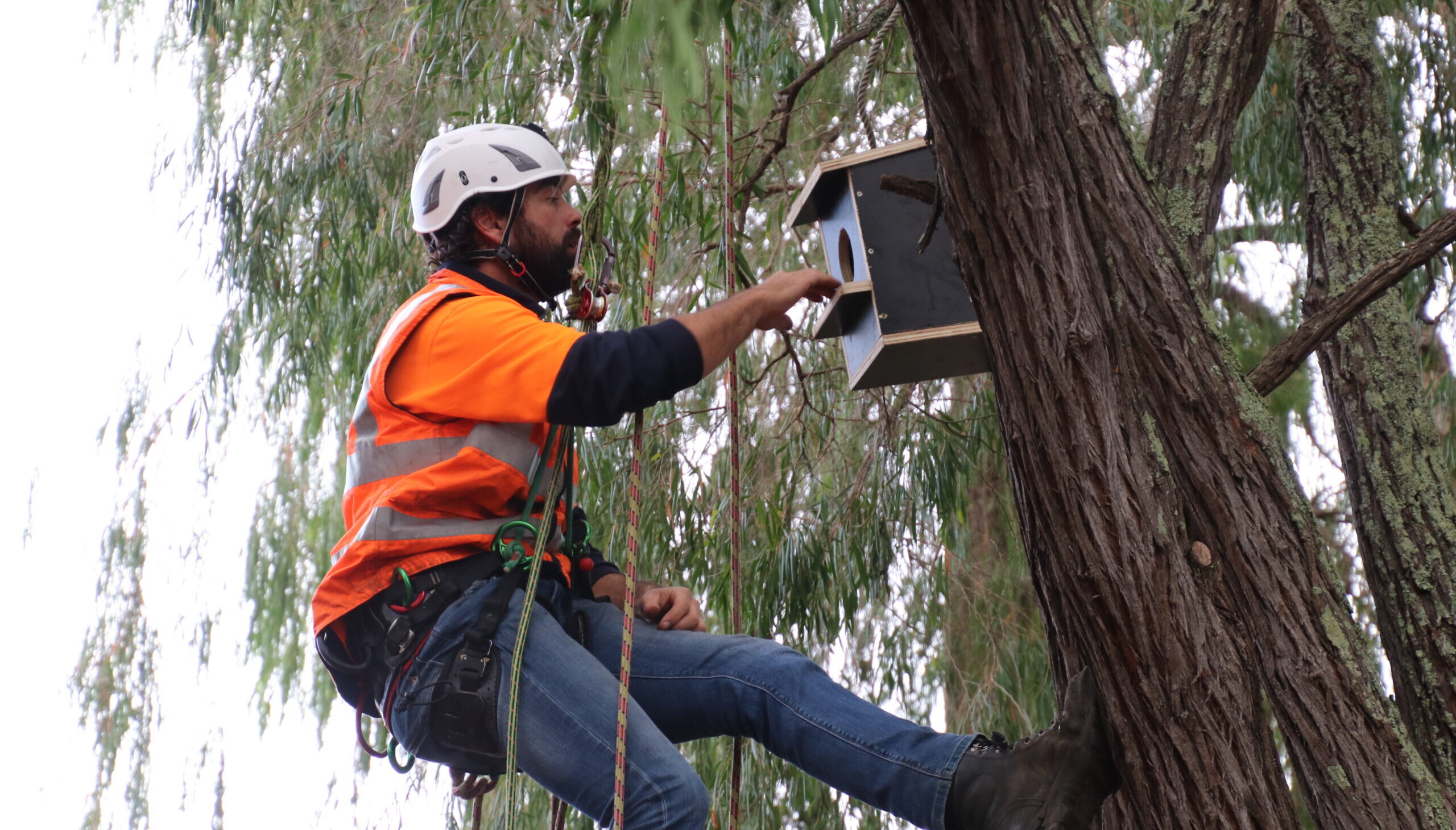
Monitoring possum box use
Check your box every four weeks to see if it is being used by possums or native wildlife, and to ensure it’s not being overtaken by feral bees.
If feral bees are using your possum box, seek professional help to remove existing bees.

